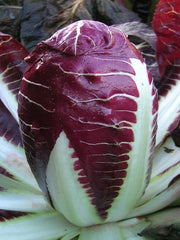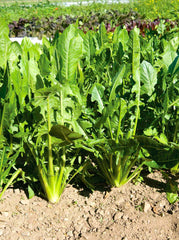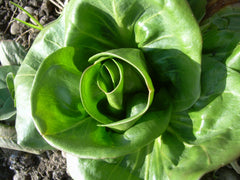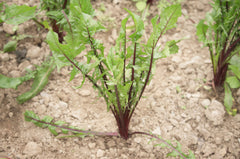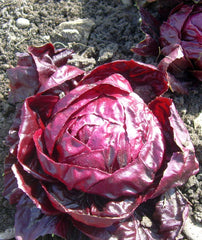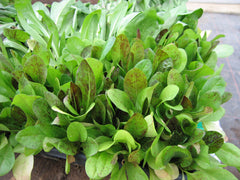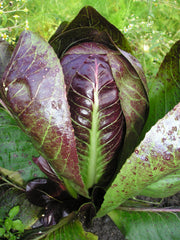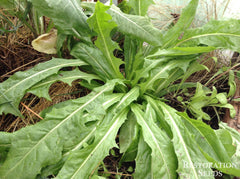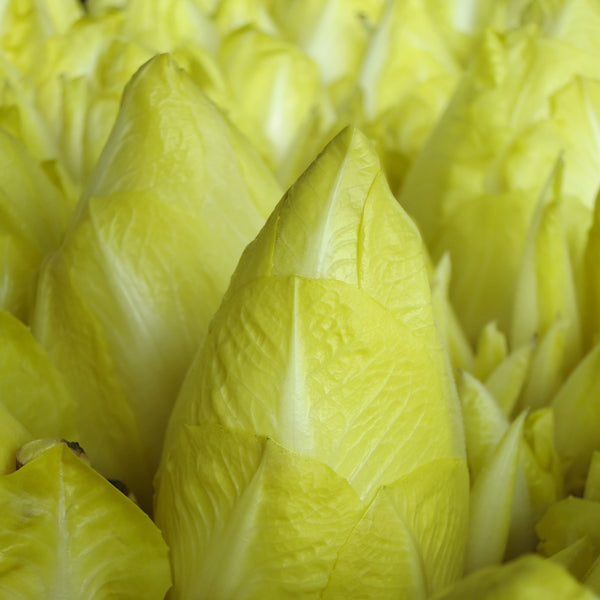KS-SW-ZS-01 KS belgian endive
ks-sw-zs-01-ks-belgian-endive KS-SW-ZS-01 KS belgian endive Chicorium intybus
HOW TO GROW BELGIAN ENDIVE
Growing Belgian Endive is a 3 step process. Growing roots, storing them and forcing the roots. Start indoors 6 weeks before last frost and transplant after last frost. Time root harvest so storage area is sufficiently cold. The tightly folded small heads, called chicons, are produced by forcing new growth from fall harvested roots. Optimal root shoulder diameter for harvest is 1-1/4–2/1/4” and 7” length. Cure roots in the field shaded 4-5 days then store 32–34˚F with 96–98% humidity. Force 1/2–3/4 of root length in moist soilless mix with bottom heat in complete darkness. Air temp should be 5–6˚F cooler than soil temp of 60 to 70˚F. Harvest about 5” heads in 21–24 days. Washing can cause chicons to brown. Soil pH 5.8-6.5. Hardiness zones 4-9. Perennial.
Usual seed life 5 years. Isolation distance for seed saving: 1/2 mile.
Planting Depth 1/4”
Soil Temp. Germ. 50˚F
Days to Germ. 5-15
Plant Spacing 23/12/20143”
Row Spacing 18”
Days To Maturity 130–140
Full Sun, Moist Well Drained
Usual seed life 5 years. Isolation distance for seed saving: 1/2 mile.
Planting Depth 1/4”
Soil Temp. Germ. 50˚F
Days to Germ. 5-15
Plant Spacing 23/12/20143”
Row Spacing 18”
Days To Maturity 130–140
Full Sun, Moist Well Drained
- 75 Seeds$3.50
- 750 Seeds$12.50
Endive has a small head of cream-colored, bitter leaves. It is often sold wrapped in blue paper to protect it from light and also to preserve its pale color and delicate flavor. The smooth, creamy white leaves may be served stuffed, baked, boiled, cut and cooked in a cream sauce, or simply cut raw. The tender leaves...
Endive has a small head of cream-colored, bitter leaves. It is often sold wrapped in blue paper to protect it from light and also to preserve its pale color and delicate flavor. The smooth, creamy white leaves may be served stuffed, baked, boiled, cut and cooked in a cream sauce, or simply cut raw. The tender leaves are slightly bitter; the whiter the leaf, the less bitter the taste. Also known as witloof. Tags: Harvest: Early, Color: Yellow, Season: Spring Fall Winter, Certification: Biodynamic.
Horace mentions endive in reference to his own diet, which he describes as very simple: "As for me, olives, endives, and mallows provide sustenance". The technique for growing blanched Belgian endives was accidentally discovered in the 1850s in Schaerbeek, Belgium. Endive is grown completely underground or indoors in the absence of sunlight in order to prevent the leaves from turning green and opening up (etiolation). The plant has to be kept just below the soil surface as it grows, only showing the very tip of the leaves. Today France is the largest producer of endive. Delicious endive recipes. greens Harvest: Early, Color: Yellow, Season: Spring Fall Winter, Certification: Biodynamic
Horace mentions endive in reference to his own diet, which he describes as very simple: "As for me, olives, endives, and mallows provide sustenance". The technique for growing blanched Belgian endives was accidentally discovered in the 1850s in Schaerbeek, Belgium. Endive is grown completely underground or indoors in the absence of sunlight in order to prevent the leaves from turning green and opening up (etiolation). The plant has to be kept just below the soil surface as it grows, only showing the very tip of the leaves. Today France is the largest producer of endive. Delicious endive recipes. greens Harvest: Early, Color: Yellow, Season: Spring Fall Winter, Certification: Biodynamic
Learn More
Reviews
